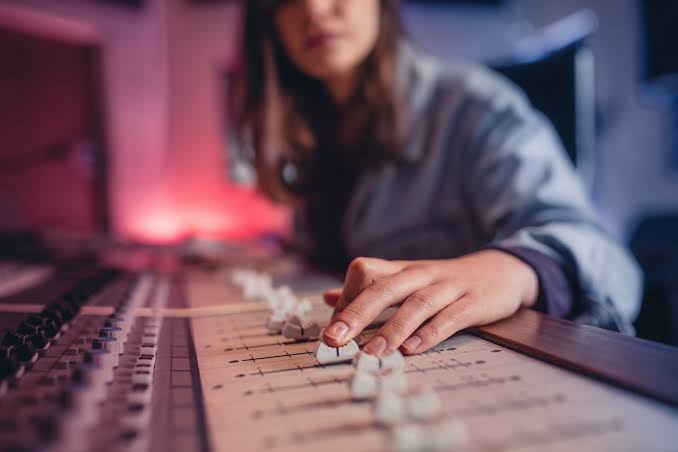When we think of our favorite movie moments, the most intense video game levels, or a music track that gave us chills — sound is always at the heart of it. While visuals grab our attention, it’s the sound design that breathes life into what we see. In today’s digital age, the boundaries between cinema, gaming, and music are blurring, creating a fascinating fusion of storytelling through sound.
Whether you’re a filmmaker, a game developer, or a musician, understanding the power of sound design is essential. And now, with the rise of artificial intelligence, creators are discovering new ways to bring their sonic visions to life, even by creating your AI music without needing a full studio setup.
Let’s dive into how sound design connects these creative worlds and how you can leverage it in your own projects.
Why Sound Design Matters More Than Ever
Sound design isn’t just about cool effects or background music — it’s a storytelling tool. It adds emotion, depth, and realism, influencing how audiences feel, react, and remember an experience.
- In movies, sound design creates atmosphere. Think of the eerie tension in horror films like A Quiet Place, where silence and subtle sounds do more than dialogue ever could.
- In video games, it guides player behavior. A rising pitch might warn of nearby danger, while spatial audio can make you feel like you’re truly inside the world.
- In music, sound design experiments with textures and layers, from synth pads to granular effects, to make each track unique and immersive.
It’s the intersection of emotion and technology — and it’s becoming more accessible than ever.
How Movies and Games Use Sound to Tell Stories
The cinematic universe and the gaming industry have long relied on immersive audio to heighten engagement. But the way they use sound is evolving, influenced by each other.
Interactive Audio in Games Inspired by Film
Games like The Last of Us or Red Dead Redemption 2 are often praised for their film-like quality — and much of that comes from sound. These games feature dynamic audio that shifts based on player movement, mimicking cinematic soundscapes.
Cinematic Techniques in Gaming
Filmmaking tools like Foley (creating everyday sound effects) are now essential in game design. Developers simulate real-world sounds — footsteps on gravel, wind whistling through trees — to make environments feel tangible.
Adaptive Music Scoring
Adaptive music is a technique where a soundtrack changes depending on a player’s actions or emotional intensity in a film scene. This isn’t just about layering drums during a chase scene — it’s a full emotional arc in sound. Games like Journey and God of War use it masterfully, and filmmakers are taking notes.
Music’s Role in Visual and Interactive Storytelling
In modern storytelling, music isn’t confined to tracks played over a scene — it’s a key character.
Scoring Emotional Impact
Hans Zimmer’s scores (Inception, Interstellar) use experimental sound techniques that musicians are now emulating in their own compositions. Rising tones, deep sub-bass, and unconventional rhythms influence not just cinema but also how artists produce tracks for streaming platforms and live performances.
Creating Sound Worlds
In games like Cyberpunk 2077, music doesn’t just accompany the story — it is the story. Artists created entire in-game radio stations, genres, and even AI-generated performers that enhance immersion.
Musicians as Sound Designers
More musicians are now working across media. Composer Trent Reznor (of Nine Inch Nails) went from industrial rock to Oscar-winning film scores. This crossover is encouraging new generations to blend skills — and many are starting with tools that allow them to create entire tracks using AI, plugins, and sound libraries.
Tools and Tech Pushing Boundaries
As AI and machine learning become part of the creative toolkit, artists of all types are finding new possibilities.
- AI-assisted music platforms now allow you to generate orchestral themes, ambient textures, or genre-specific beats by typing in prompts or adjusting a few parameters.
- Foley libraries and audio plugins can simulate everything from city soundscapes to alien languages.
- Spatial audio technology is making sound feel 3D, essential for VR, gaming, and even live concerts.
One of the most exciting changes? You can now produce studio-level sound design on a laptop, and even start by creating your AI music to spark inspiration or prototype quickly.
Actionable Tips for Your Next Project
Whether you’re an indie filmmaker, a solo game developer, or an aspiring musician, here are some practical ways to elevate your sound design:
- Think Emotion First
Don’t just add sound to fill silence. Ask: what should the audience feel? Then design the sound to trigger that emotion. - Use Layering
Combine natural sounds, synths, and ambient effects to build rich textures. Even a simple scene can come alive with the right layers. - Experiment with Silence
Silence can be just as powerful as sound. It creates tension, focus, and contrast. - Play with Spatial Audio
Use stereo panning and reverb to simulate depth and direction. It’s especially powerful in headphones or VR. - Embrace AI as a Co-Creator
AI tools can help you generate ideas fast, especially when you’re stuck. Use them for ideation, then personalize the results.
Read More: Create, Share, Connect: Use Your Own QR Code Maker
Final Thoughts
Sound design is no longer a niche craft tucked away in post-production studios. It’s a universal language — one that connects movies, games, and music in surprising, emotional, and unforgettable ways.
Whether you’re crafting an indie horror short, designing an open-world adventure, or laying down your next experimental track, your sound is your signature. And with today’s tools, including AI music platforms, that signature can be created faster and bolder than ever.
So next time you press play, close your eyes — and listen. Sound is storytelling. Sound is immersion. Sound is art.

